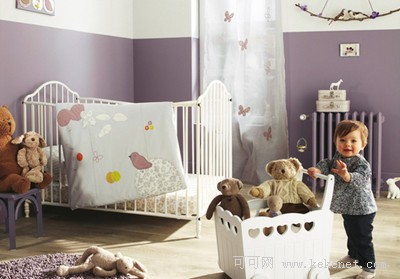(单词翻译:单击)
MINE! That word appears early in life. Toddlers have an idea of ownership. They also have an idea of what can be owned, and what can't.
Children as young as three believe human-made objects are owned but naturally occurring things like pinecones are not.
In one experiment 3-year olds looked at pictures of a fork, teddy bear, truck, and other human-made objects. They also looked at pictures of a leaf, shell, or rock. The researchers asked: Does this belong to anyone?
The kids classified human-made objects as owned 89 percent of the time and naturally occurring objects as owned only 28 percent of the time.
In another experiment scientists tested children with less familiar objects like a grenade versus coral. This time children under 6 did not tend to name the manufactured object as owned. But when the unfamiliar, artificial objects were referred to as “human-made,” the younger children tended to classify them as owned. The work appears in the journal Developmental Psychology(PDF.)
It is apparently only much later in life, when individuals have reached a seasoned maturity, that they can conceive of ownership of natural objects. “You kids get off of MY lawn!”
“是我的!” 这个词幼儿就会说出口。学步的幼儿已经有了“拥有”这个想法。他们也对什么能够被拥有和什么不能够有着一定的想法。
三岁大的小孩相信人造的物品是被拥有的,而天然的物品,例如松果,却不是。
在一项实验中,三岁的小孩被安排观看叉,泰迪熊,货车或其他人造物品的图片。他们也观看树叶,贝壳或石头的图片。然后研究人员会问:这个东西是不是属于其他人的?
过程中,小孩们把人造物品归类为“被拥有的”比例占了89%,而把自然物品被归类为“被拥有的”比例却只占了28%。
在另一项实验中,科学家用小孩不那么熟悉的物品,例如手榴弹对应珊瑚,来做测试。这次,六岁以下的小孩并不倾向于把人造物品归类为“被拥有的”。但当提及到这些不熟悉的人工物品是“人类制造的”时,较年轻的小孩倾向于把它们归类为“被拥有的”。(该篇文章刊登在期刊Developmental Psychology(PDF)上。)
明显地,只有在多年以后,当这些个体老练成熟时,他们就会有了拥有自然事物的想法。“你们这些屁孩快滚出我的草地!”
—Christie Nicholson



